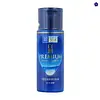What's inside
What's inside
 Key Ingredients
Key Ingredients

 Benefits
Benefits

 Concerns
Concerns

No concerns
 Ingredients Side-by-side
Ingredients Side-by-side

Tranexamic Acid
AstringentAllantoin
Skin ConditioningHydrolyzed Hyaluronic Acid
HumectantSodium Hyaluronate
HumectantCetyl Phosphate
EmulsifyingTocopherol
AntioxidantBacillus/Coix Lacryma-Jobi Ma-Yuen Seed/Soybean Ferment Filtrate
AntioxidantSecale Cereale Seed Extract
AbrasiveButylene Glycol
HumectantHydrogenated Castor Oil
EmollientPhenoxyethanol
PreservativeCitric Acid
BufferingBenzyl Benzoate
AntimicrobialCaprylic/Capric Triglyceride
MaskingSqualane
EmollientEDTA
Dipropylene Glycol
HumectantSodium Citrate
BufferingDiglycerin
HumectantXanthan Gum
EmulsifyingTranexamic Acid, Allantoin, Hydrolyzed Hyaluronic Acid, Sodium Hyaluronate, Cetyl Phosphate, Tocopherol, Bacillus/Coix Lacryma-Jobi Ma-Yuen Seed/Soybean Ferment Filtrate, Secale Cereale Seed Extract, Butylene Glycol, Hydrogenated Castor Oil, Phenoxyethanol, Citric Acid, Benzyl Benzoate, Caprylic/Capric Triglyceride, Squalane, EDTA, Dipropylene Glycol, Sodium Citrate, Diglycerin, Xanthan Gum
Tranexamic Acid
AstringentDipotassium Glycyrrhizate
HumectantHydrolyzed Hyaluronic Acid
HumectantSodium Hyaluronate
HumectantMagnesium Ascorbyl Phosphate
AntioxidantTocopherol
AntioxidantDipropylene Glycol
HumectantGlycerin
HumectantDiglycerin
HumectantButylene Glycol
HumectantLimnanthes Alba Seed Oil
Skin ConditioningOctyldodecanol
EmollientDimethicone
EmollientGlyceryl Heptanoate
EmollientGlyceryl Stearate
EmollientSodium Stearoyl Glutamate
CleansingDisodium EDTA
Carbomer
Emulsion StabilisingSodium Bisulfite
AntioxidantXanthan Gum
EmulsifyingPhenethyl Alcohol
MaskingPhenoxyethanol
PreservativeTranexamic Acid, Dipotassium Glycyrrhizate, Hydrolyzed Hyaluronic Acid, Sodium Hyaluronate, Magnesium Ascorbyl Phosphate, Tocopherol, Dipropylene Glycol, Glycerin, Diglycerin, Butylene Glycol, Limnanthes Alba Seed Oil, Octyldodecanol, Dimethicone, Glyceryl Heptanoate, Glyceryl Stearate, Sodium Stearoyl Glutamate, Disodium EDTA, Carbomer, Sodium Bisulfite, Xanthan Gum, Phenethyl Alcohol, Phenoxyethanol
 Reviews
Reviews

Ingredients Explained
These ingredients are found in both products.
Ingredients higher up in an ingredient list are typically present in a larger amount.
Butylene Glycol (or BG) is used within cosmetic products for a few different reasons:
Overall, Butylene Glycol is a safe and well-rounded ingredient that works well with other ingredients.
Though this ingredient works well with most skin types, some people with sensitive skin may experience a reaction such as allergic rashes, closed comedones, or itchiness.
Learn more about Butylene GlycolDiglycerin is a humectant. It is derived from glycerin, which is naturally found in your skin.
As a humectant, it helps draw moisture to the skin from the air.
Dipropylene Glycol is a synthetically created humectant, stabilizer, and solvent.
This ingredient helps:
Dipropylene glycol is technically an alcohol, but it belongs to the glycol family (often considered part of the ‘good’ alcohols). This means it is hydrating and gentle on skin unlike drying solvent alcohols like denatured alcohol.
As a masking agent, Dipropylene Glycol can be used to cover the smell of other ingredients. However, it does not have a scent.
Studies show Dipropylene Glycol is considered safe to use in skincare.
Learn more about Dipropylene GlycolHydrolyzed Hyaluronic Acid is a form of hyaluronic acid. It is created by the hydrolysis of hyaluronic acid with a high molecular weight. Once created, Hydrolyzed Hyaluronic Acid has a low molecular weight.
Low molecular weight HA has been shown to hydrate and increase elasticity of the skin. Increasing elasticity is also associated with reduction of wrinkle depth.
One study found topical low molecular weight hyaluronic acid may be considered for the treatment of rosacea in the adult population. However, we always recommend speaking with a professional about your skin concerns.
Hyaluronic acids are a humectant. This means they draw moisture from the air. Hyaluronic acids help moisturize, soothe, and protect the skin.
Read more about other common forms of hyaluronic acid:
Learn more about Hydrolyzed Hyaluronic AcidPhenoxyethanol is a preservative that has germicide, antimicrobial, and aromatic properties. Studies show that phenoxyethanol can prevent microbial growth. By itself, it has a scent that is similar to that of a rose.
It's often used in formulations along with Caprylyl Glycol to preserve the shelf life of products.
Sodium Hyaluronate is hyaluronic acid's salt form. It is commonly derived from the sodium salt of hyaluronic acid.
Like hyaluronic acid, it is great at holding water and acts as a humectant. This makes it a great skin hydrating ingredient.
Sodium Hyaluronate is naturally occurring in our bodies and is mostly found in eye fluid and joints.
These are some other common types of Hyaluronic Acid:
Learn more about Sodium HyaluronateTocopherol (also known as Vitamin E) is a common antioxidant used to help protect the skin from free-radicals and strengthen the skin barrier. It's also fat soluble - this means our skin is great at absorbing it.
Vitamin E also helps keep your natural skin lipids healthy. Your lipid skin barrier naturally consists of lipids, ceramides, and fatty acids. Vitamin E offers extra protection for your skin’s lipid barrier, keeping your skin healthy and nourished.
Another benefit is a bit of UV protection. Vitamin E helps reduce the damage caused by UVB rays. (It should not replace your sunscreen). Combining it with Vitamin C can decrease sunburned cells and hyperpigmentation after UV exposure.
You might have noticed Vitamin E + C often paired together. This is because it is great at stabilizing Vitamin C. Using the two together helps increase the effectiveness of both ingredients.
There are often claims that Vitamin E can reduce/prevent scarring, but these claims haven't been confirmed by scientific research.
Learn more about TocopherolTranexamic Acid is best used for treating hyperpigmentation, discoloration, and melasma. It can also help build a stronger skin barrier.
Once applied, Tranexamic Acid starts decreasing inflammation from UV exposure. Tranexamic Acid also prevents our skin cells from meeting the pigment production cells.
Its brightening property makes it great at reducing the appearance of acne scars and marks.
Fun fact: Tranexamic Acid is also a medication used to reduce heavy bleeding.
This acid is derived from lysine, an amino acid.
Learn more about Tranexamic AcidXanthan gum is used as a stabilizer and thickener within cosmetic products. It helps give products a sticky, thick feeling - preventing them from being too runny.
On the technical side of things, xanthan gum is a polysaccharide - a combination consisting of multiple sugar molecules bonded together.
Xanthan gum is a pretty common and great ingredient. It is a natural, non-toxic, non-irritating ingredient that is also commonly used in food products.
Learn more about Xanthan Gum